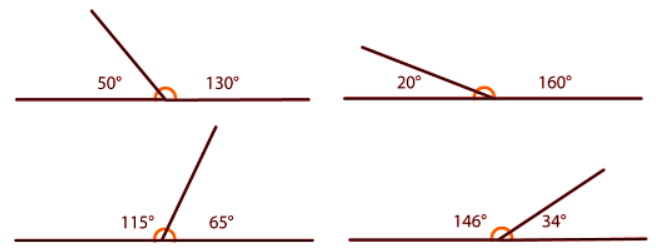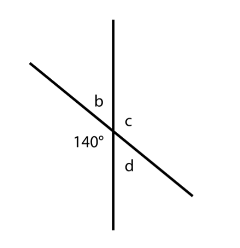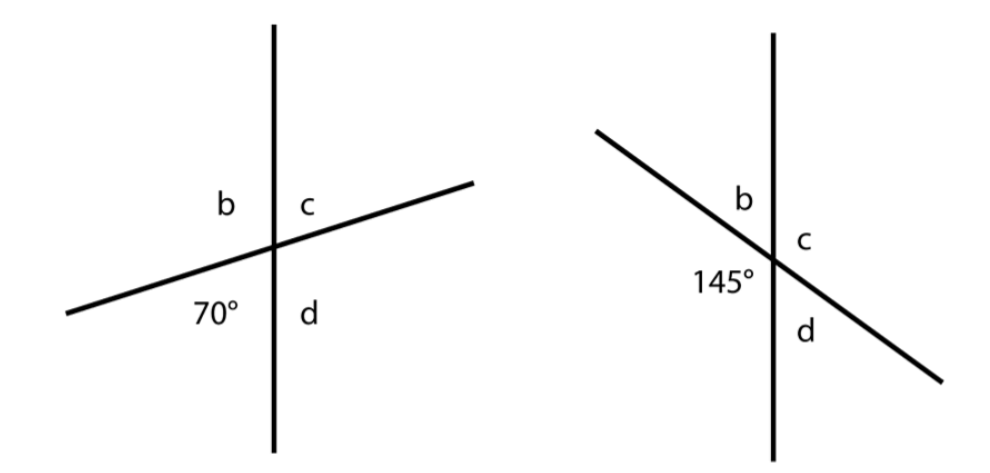Calculating angles | Year 6 Mathematics PDF Download
How to Calculate Angles
You can determine angles around straight lines by employing pattern-spotting, logic, and reasoning.
Key facts to remember:
- 360° constitutes a full turn
- 180° accounts for half a turn
Angles on a Straight Line
One half turn is 180°. When a straight line or half turn is split into two angles, knowing one angle enables the calculation of the other.
For instance, 120° + 60° = 180°.
If a straight line was divided into three angles, the sum of all three angles would be 180°.
Various examples of angles on straight lines illustrate how they sum up to 180°.
Example
Example: Can you work out what angle b is?
Sol:

Angle b, when on a straight line with 140°, must be 40°.
140° + 40° = 180°
For angle c, since b + c = 180°, and b is 40°, c equals 140°.
40° + 140° = 180°
Angle d is 40° as it's on a straight line with c.
c + d = 180°
Vertically Opposite Angles
- Vertically opposite angles refer to angles that are positioned opposite each other when a straight line intersects another straight line.
- These angles are always equal in measure.
Example
Example: What do you think angle c is in both of these diagrams?
In the first diagram angle c equals 70° and in the second diagram angle c equals 145°.
Angles b and d are vertically opposite, so they are equal too.
|
54 videos|54 docs|17 tests
|
FAQs on Calculating angles - Year 6 Mathematics
| 1. What are the different types of angles? |  |
| 2. How do you calculate the measure of an angle? |  |
| 3. How can angles be classified based on their relationship to each other? |  |
| 4. What is the sum of interior angles in a triangle? |  |
| 5. How can you use angle properties to solve geometry problems? |  |

|
Explore Courses for Year 6 exam
|

|
















